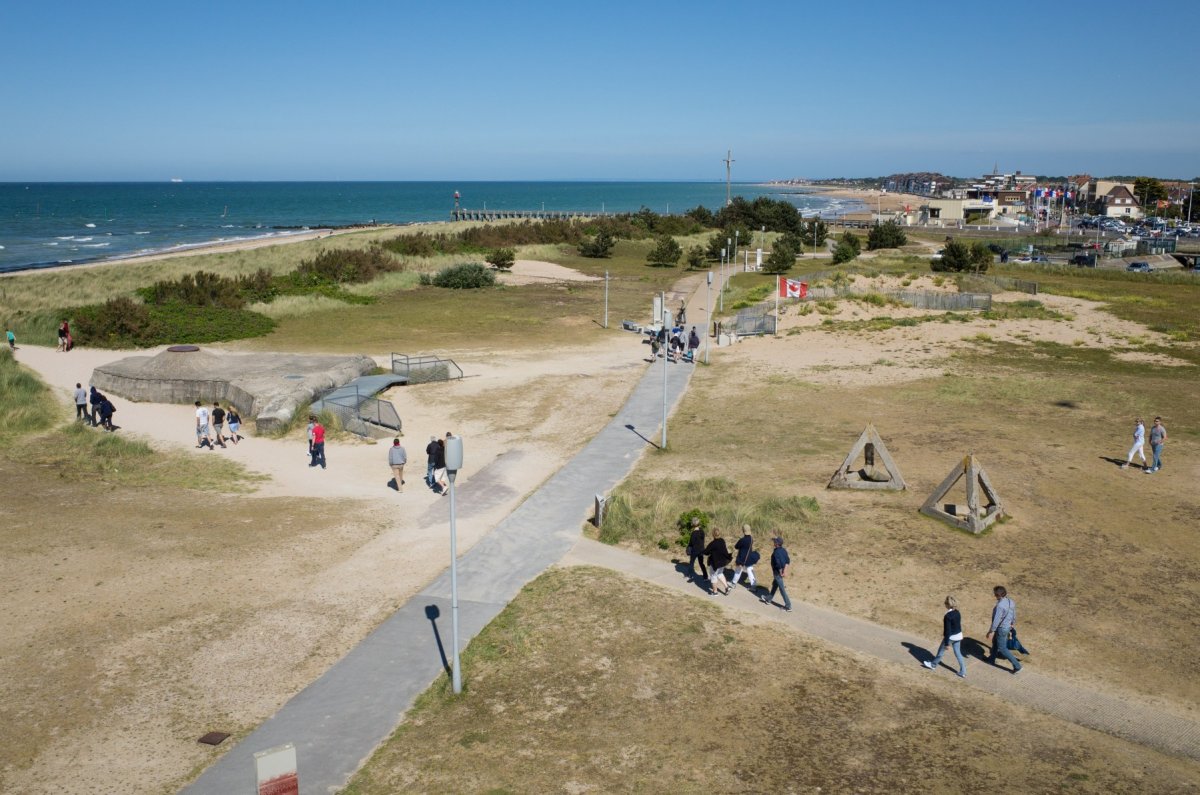A Canadian war museum in Normandy, France, is working to unearth and preserve remnants of Hitler’s so-called Atlantic Wall, despite opposition from those who believe the structures should be destroyed.

One of the greatest military barriers ever built, the Nazis’ Atlantic Wall involved an extensive system of German defence fortifications that stretched more than 5,000 kilometres from southern France to Norway. Hitler ordered its construction in 1942 to protect the coastline against an expected Allied attack.
Gerard Verdonk was one of thousands of French civilians forced to assist with its construction. He was a teenager when the Nazis invaded his hometown of Bény-sur-Mer, located several kilometres inland from Juno Beach. Verdonk’s job was to carry supplies of water and concrete to crews on the beach. While he did, his father asked him to count his footsteps, to measure the distance between German positions.
“I didn’t know at the time, but my father was secretly passing this information to the French resistance, who transmitted it to England,” Verdonk told Global News.
“On D-Day, my father knew the attack was coming. And I remember the first soldier who arrived in our village: A Canadian.”
WATCH: German bunker uncovered on Juno Beach ahead of D-Day anniversary
The Atlantic Wall failed to withstand the Allies’ D-Day invasion on June 6, 1944, and most of its infrastructure was destroyed. But hundreds of concrete bunkers, command centres and artillery emplacements remain intact and are still visible today, perched on the sand next to sunbathers.
The local French communities have long wrestled with whether to preserve or demolish the structures. To some, they’re unofficial monuments; to others, they’re safety hazards and symbols of Nazi occupation.
“People wanted to forget about the wall and to forget about the war,” says Nathalie Worthington, director of the Juno Beach Centre in the French coastal village of Courseulles-sur-Mer.
The museum is dedicated to the 45,000 Canadians killed during the Second World War.
A French citizen, Worthington grew up in Normandy and her father was liberated by the Canadians on D-Day. She and the Juno Beach Centre are part of a campaign to locate and preserve the remaining remnants of the Atlantic Wall, including an observation bunker discovered buried beneath the sand dunes in 2010 just steps from the museum. In 2015, a German machine gun emplacement was also uncovered and has since been excavated by a team of volunteers.

Get daily National news
“And quickly we could see that there were other spots, other pieces of the Atlantic Wall. And so gradually we have tried to dig them up, to rehabilitate them and to open them to the public,” Worthington says.
The Juno Beach Centre is now the only museum in Normandy that offers public tours of the Atlantic Wall beach defence systems, says Canadian tour guide Louis Lebel.
“We have the responsibility to show this place to visitors who come,” Lebel says. “You’re walking around and there’s a bunker, there’s a gun emplacement. You’d almost have to actively try to look away to forget what happened here.”
The site where the Juno Beach Centre is located was the scene of intense fighting during the D-Day landings. Before the museum opened in 2003, its location was used as a campsite.
It was founded by Canadian D-Day veteran Garth Webb, after he returned to Juno Beach in June 1994 and was concerned there was little to show his grandchildren to explain and commemorate the Canadian contribution.
WATCH: (Nov. 8, 2018) Former Second World War pilot shares memories of his time serving in the air force

Webb died in 2012 and the number of surviving D-Day veterans grows smaller each year.
“This Atlantic War is the living proof of German occupation during the Second World War,” Worthington says. “We know that since the 50th anniversary (of D-Day) there has been an increasing interest in the Second World War, and it’s been the same for the German remains of the Atlantic Wall. They are part of the story. So gradually they have become more and more important.”
At 93, Gerard Verdonk still works tirelessly to share memories of life under Nazi occupation and of D-Day, including Canadian soldiers he saw killed in the fighting that followed. As he stares at the remnants of the Atlantic Wall on Juno Beach, he thinks of them.
“That’s what I try to convey to everyone when they ask me about that time,” he says.
“So that people will remember those who were lost. And to thank the Canadians for helping to free my country.”













Comments